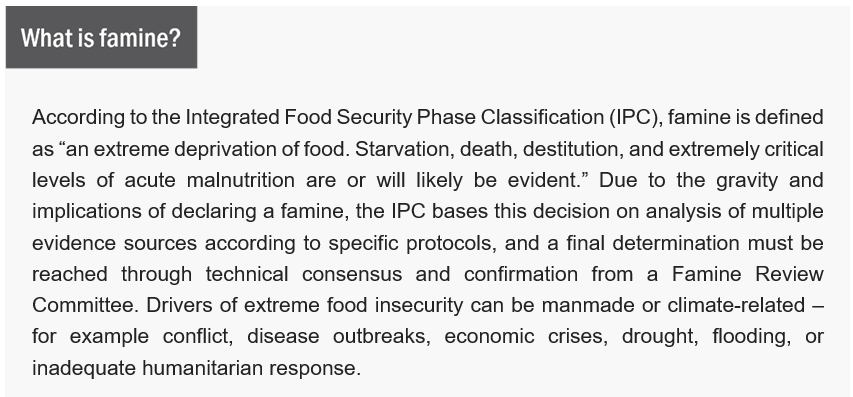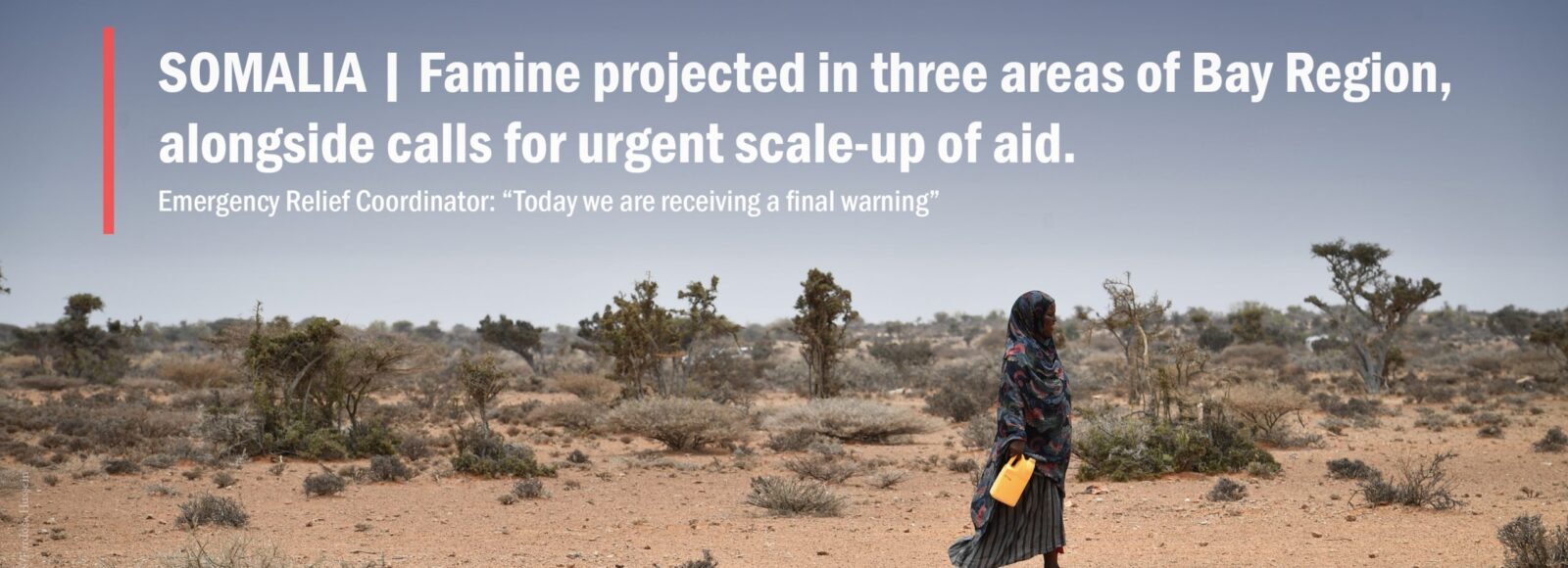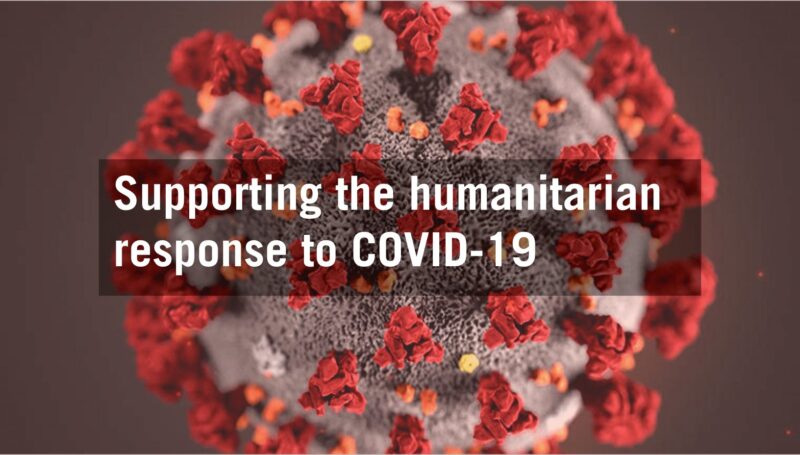Emergency Relief Coordinator: “Today we are receiving a final warning.”
What is happening?
Watch our 2-minute explainer on the current drought crisis
This week’s “multi-partner technical release” from the IPC

After several weeks of analysis and deliberation, the IPC released a famine projection for Baidoa and Buur Hakaba on 5 September. According to the technical release, agropastoral populations in these two districts as well as people who have displaced to Baidoa town are expected to face famine (IPC Phase 5) between October and December, if significant humanitarian assistance is not provided to those who are most in need.
This projection takes into consideration that the July harvest has failed, climate forecasts indicate below-average rains for a fifth consecutive season this October-November, and that little humanitarian aid is currently planned to be distributed in the Bay region in the coming months. These factors compound the extreme needs and vulnerabilities people are facing across the country due to the past four failed rainy seasons, ongoing conflict and insecurity, and rising food prices.
What does this mean?
As UN Emergency Relief Coordinator Martin Griffiths stated yesterday, “this is a final warning to all of us.” The IPC release makes clear that there is a limited window to prevent famine, and that immediate action, together with a re-prioritization of funding towards Somalia, is needed urgently. Sustained aid beyond the end of the year will also be critical, as needs amongst people living in or displaced from drought affected areas are expected to remain high well into 2023.
We must also keep reiterating that the situation is dire now, and has been for some time. Admissions to nutrition feeding centres have been steadily rising this year, and as referenced in Griffiths’ remarks, doctors have noted a rise in admissions of malnourished children to hospitals in Baidoa and Banadir.
Even if a famine is averted in the coming months – according to the technical thresholds required to formally declare this specific kind of mass mortality event – malnutrition and mortality rates above emergency thresholds have been recorded for the last few months. A lack of access to water, ongoing cholera outbreaks, and poor sanitation conditions in displacement sites are all significant contributing factors.
[metaslider id=”4667″]
What next?
The complete IPC analysis for Somalia will be released by the end of this week. Although additional famine projections are not expected, extreme food insecurity alongside WASH and health needs in other areas of Somalia are anticipated – requiring a scale-up of humanitarian assistance beyond Baidoa and Buur Hakaba as well.
Want more info?
- Latest REACH advocacy brief focused on Baidoa and Buur Hakaba public health conditions
- Key findings from the last round of Humanitarian Situation Monitoring in Somalia
- Subscribe to receive Somalia alerts from the REACH Resource Centre








